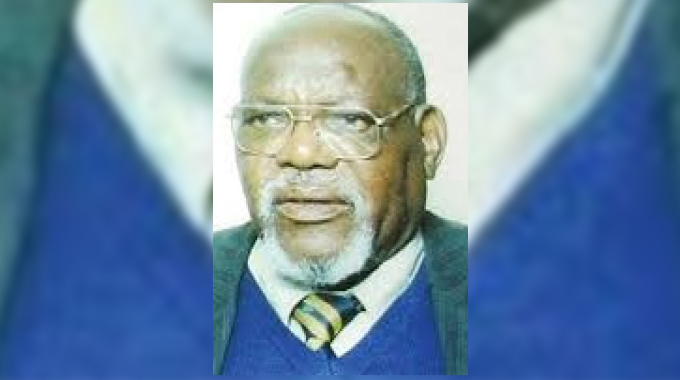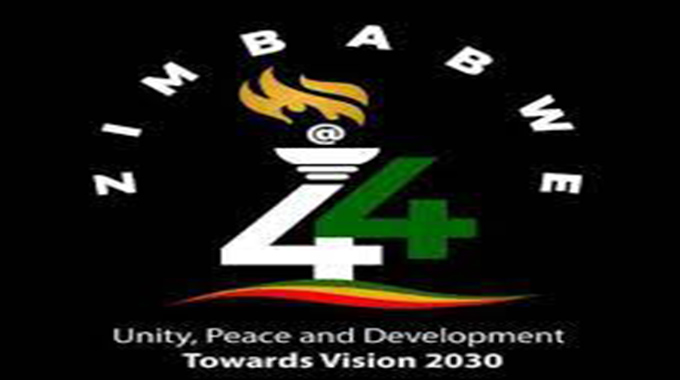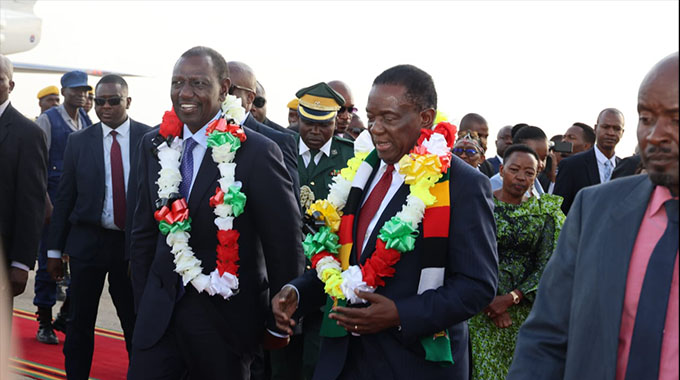Cde Simon Muzenda: A lifetime of sacrifice for Zim’s liberation

CDE Simon Vengai Muzenda, the veteran nationalist and Vice President of the Republic of Zimbabwe, died on Saturday 20 September 2003 after a long illness at the age of 80. He was buried at the National Shrine on 24 September 2003.
When announcing the death of the Vice-President through a live broadcast on Saturday night, 20 September 2003, the late former President, Cde Robert Mugabe, described Cde Muzenda as a veteran freedom fighter, a father figurehead, a cultural icon and the Soul of the Nation. Following the death of this gallant fighter, people from all walks of life joined the Muzenda family and the Nation as a whole to express their grief and to mourn the departure of the great nationalist leader who made immense sacrifices in order to liberate his country from foreign occupation. Indeed, the history of nationalism and of the liberation struggle in Southern Africa would not be complete without mentioning the inestimable contribution that Cde Simon Muzenda made towards the independence of Zimbabwe.
Cde Mzee, as Vice-President Muzenda was affectionately called, was born on 28 October 1922 in Gutu District in the then Fort Victoria, and now Masvingo Province. Like most African children during his time, the Vice-President started his primary education late. He went to Nyamande Primary School at the age of 14 and then proceeded to Gokomere Mission and afterwards to Domboshawa in 1944 where he trained as a teacher.

Cde Robert Mugabe
As early as 1945, Cde Muzenda demonstrated a high degree of political consciousness when he turned down a farming scholarship to train as an agricultural demonstrator, arguing that the career would require him to supervise the killing of cattle belonging to his fellow African people under the colonial government’s countrywide de-stocking programme.
Mzee taught at Empandeni Mission where he met a young school teacher, Robert Mugabe, and started a friendship that though set to blossom years later, would at first be nothing more than a fleeting encounter.
His passion for education made him to enrol at Marianhill College in South Africa for a three-year Diploma in Carpentry. After completing the course in 1948, he taught at Mazenod Catholic School, Mayville, Durban until 1950 when he returned home where he was soon to marry his childhood sweetheart, Maud Matsikidze before settling in Bulawayo.
In South Africa, Cde Muzenda was inspired politically by the activities of one Reverend Michael Scott, who was then fighting the Group Areas Act in the then Apartheid Republic. Then, he was in the congenial company of several fellow Zimbabweans, notably George Silundika, James Dambaza Chikerema and Mutero, all of whom were later to play vital roles in the fight and subsequent overthrow of the unjust, racial and colonial white rule. About this time, controversy raged over the proposal to create the Federation of Northern Rhodesia, Southern Rhodesia and Nyasaland. Alongside the efforts of other nationalists, the notion and reality of a Federation was to be the target of young Simon’s political struggles.

Armed with the political experience earned from his sojourn in South Africa, Cde Muzenda got involved in burgeoning trade unionism in Bulawayo. Vice-President Muzenda’s first employment was as a clerk in a plywood factory before moving on to furniture factories, Modern Furniture and later to Wilfred Mart in Bulawayo. It was not very long before he opened his own workshop in Barbourfields, an African township that was a citadel of trade unionism.
During that period, Cde Muzenda was enmeshed in the activities of the Barbourfields Tenants Association, which was one of earliest bodies established in the country to articulate and champion the concerns of the black African urban dwellers.
In 1953, Cde Muzenda came to national prominence when he was elected Secretary-General of the British African National Voice Association, better known as the “African Voice”. The legendary Benjamin Burombo was the president of The African Voice. From those early days of the struggle until his accession to one of the highest offices in the land at Independence, Cde Muzenda has been an integral part of the Liberation Movement. As put succinctly by the late former President Mugabe, Cde Muzenda is “the man” and the “legend” of our liberation.
Cde Muzenda later moved to the Midlands town of Mvuma in 1955, where he started carpentry business in 1957, the late Vice-President was involved in the Southern Rhodesia African National Council (SRANC) as it opened its branches in the then Southern Province (Fort Victoria). While in Mvuma, Dr Muzenda was one of the guiding personalities who were instrumental in the formation of the National Democratic Party (NDP) in 1960. He became chairman of the Umvuma Branch of the National Democratic Party (NDP) in 1961 and was subsequently elected as the Organising Secretary of the Victoria Province at its Congress held in Bulawayo the same year.
When the NDP was banned on 9 December 1961 by the Edgar Whitehead settler regime, it was succeeded by the Zimbabwe African People’s Union (Zapu). Again Cde Muzenda, unrelenting as ever in his revolutionary drive, soon took his place in the structures of the new party as Administrative Secretary of the then Fort Victoria.
In 1962 Cde Muzenda was banned from entering the African Tribal Trust Lands after he had recited the African prayer “Nehanda Nyakasikana”. In true fighting spirit that was to be the hallmark of his political life, Cde Muzenda challenged the ban in the High Court in Masvingo where he was defended by another great son of Zimbabwe, the late Cde Herbert Chitepo. Thus history had been made, an African nationalist had deployed art in the service of the struggle, in the process showing that colonialism feared creative words.
That same year in 1962, Cde Muzenda was arrested at Zvishavane, then Shabani, for what the colonial authorities alleged had been a seditious speech, blamed for igniting riots in the small mining town. He was sentenced to 12 years in prison but served only two years at Salisbury Prison, a time he used productively. He was to reflect later, “It became a place of study. We started GCE and after 20 years, I had to start from scratch. Then even though we were in prison, we started Zanu”.
During the same period, Cde Muzenda also experienced the horrendous side of the white regime when his chest was pierced through by a needle at the behest of the Rhodesian police. However, such life-threatening experiences did not stop Cde Muzenda from pursuing his quest for freedom. After his release he attended Zanu’s First Congress in the then Gwelo in 1964, where he was elected Deputy Organising Secretary. He was arrested soon after his election, when the colonial regime’s law and order minions arrested him for possessing a small starter pistol. He was convicted of the alleged offence and served his term at Whawha Prison in 1964 and later at Sikombela where he reunited with Cde Robert Mugabe
Around that time, that is mid-60s, Cde Muzenda had started recruiting young Zimbabweans for military training in Ghana, China and other friendly countries. The nationalist movement had decided to tackle the obstinate and obdurate white regime through the barrel of the gun. The white regime had become too repressive and conservative when in 1962 the Rhodesian Front won the racial elections. With the ultra-white supremacist, Ian Douglas Smith, replacing the jittery Winston Field at the helm of the Rhodesian Front, it was clear that the only language the settler Rhodesians would understand was that of the gun. A proper onslaught against the massive Rhodesian military might would call for men like Cde Muzenda to prepare the people for the armed struggle.
When Zanu was outlawed, Cde Muzenda was placed under detention and restricted to within a 10-mile radius from Mvuma Post Office. But Mzee got the better of the regime by arguing that as a carpenter he needed free movement to secure timber. He was allowed a radius of 62 miles and used this concession to mobilise the people in Fort Victoria, Que Que and Gwelo. More spells of detention came and he was taken to Whawha in Gwelo, Sikombela and Harare, together with other great liberation fighters like Cdes Robert Mugabe, Leopold Takawira and Morton Malianga.
Eager to further his education, Cde Muzenda, while in detention pursued private studies and passed eight O-levels and two A-levels. He also took the London Chamber of Commerce Examinations and passed the Intermediate Certificate level in English and the Higher Certificate level in economics.
Cde Muzenda was released in 1971 during the Anglo- Rhodesian negotiations which culminated in the infamous Pearce Commission. Once out of detention, he again engaged in the struggle, mobilising the nation against accepting the Pearce Commission proposals.
The British sponsored constitution was resoundingly rejected by the people. Cde Muzenda was to comment that the proposals were “tantamount to asking our nation to commit political suicide”.









Comments